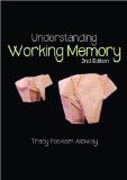
Working memory is how your brain stores information for a short period of time and how much you can fit on this ‘post-it note’ hugely influences how well you do at school and beyond. By understanding working memory means your students will be able to better support children’s learning and concentration in their teaching setting. Understanding working memory can be particularly useful when working with children with conditions such as dyslexia, ADHD and autistic spectrum disorder, where poor working memory is thought to be an underlying factor. New to this edition are: A new chapter looking at the earliest years of learning A new chapter on emotional difficulties and working memory A clear chapter structure which looks at the what, where, why and how for every difficulty. This book will make sure students are able to spot problems early and work with children to improve their working memory and ensure they reach their full potential. INDICE: Epilogue by Kim GrantChapter 1: Our Brain's Post-it-noteChapter 2: Diagnosing Working MemoryChapter 3: Specific Learning Disorder: Reading Difficulties (Dyslexia)Chapter 4: Specific Learning Disorder: Maths Difficulties (Dyscalculia)Chapter 5: Developmental CoordinationChapter 6: Attention Deficit Hyperactivity Disorder (ADHD)Chapter 7: Autistic Spectrum DisorderChapter 8: Anxiety Disorders (by Evan Copello)Chapter 9: Student Strategies and TrainingAppendix: Working Memory strategies tableEpilogue by Kim Grant
- ISBN: 978-1-4462-7421-7
- Editorial: SAGE Publications Ltd
- Encuadernacion: Rústica
- Páginas: 152
- Fecha Publicación: 29/11/2014
- Nº Volúmenes: 1
- Idioma:
